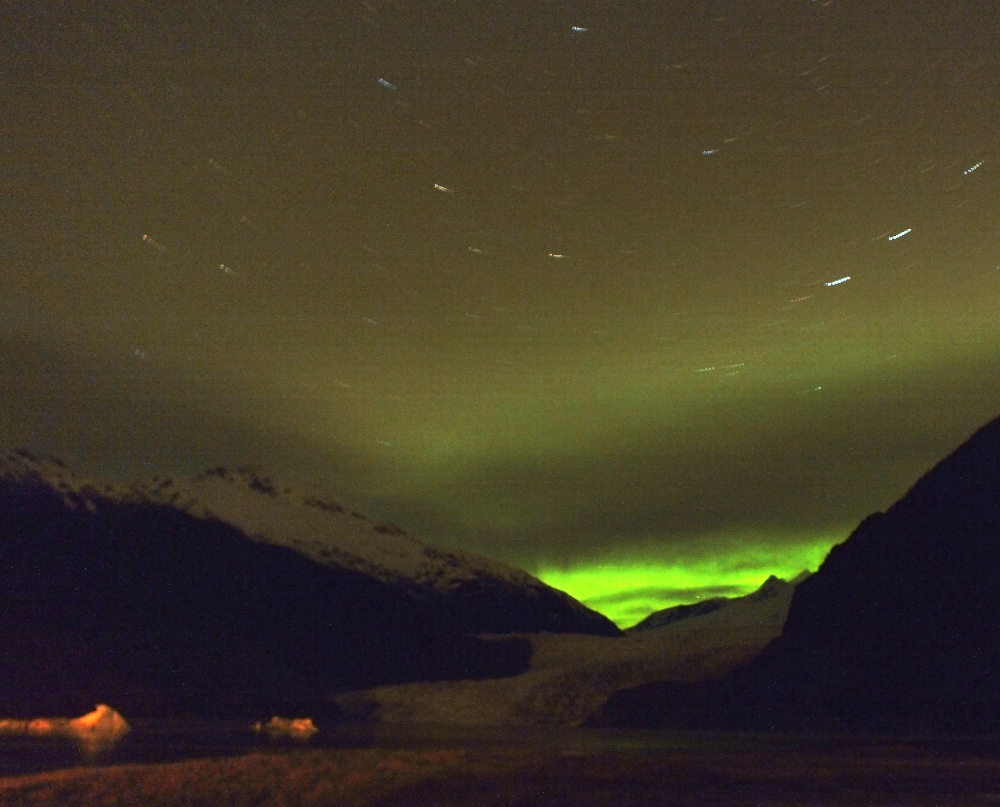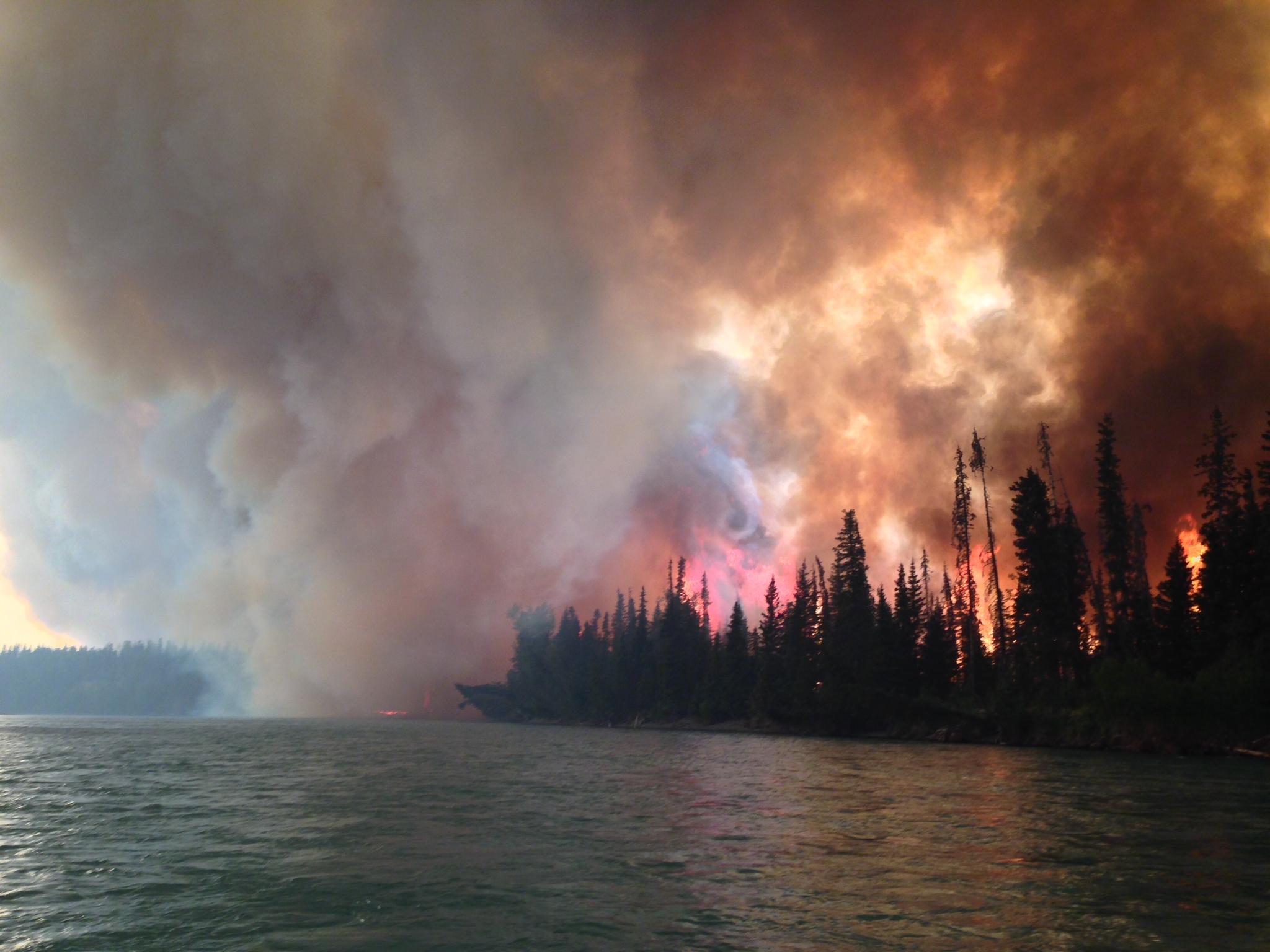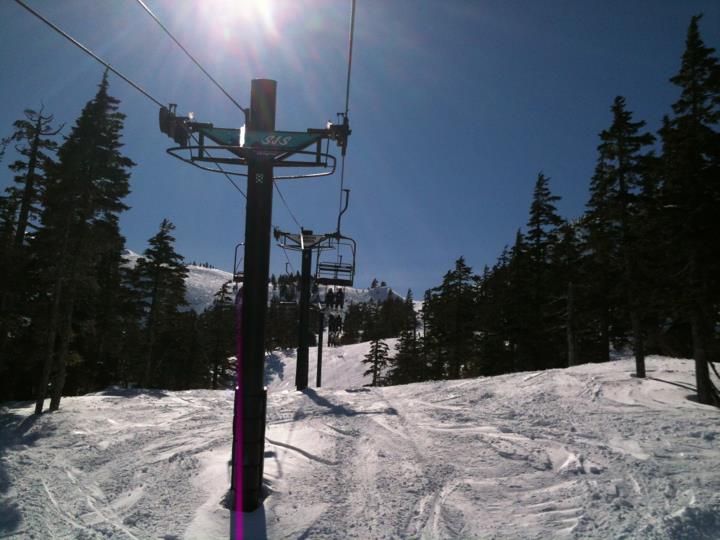
Many of the impacts of climate change on Alaska tourism would be for the worse while a few could be for the better.
The Fifth Assessment Report from the Intergovernmental Panel on Climate Change (IPCC) was released in June. But a press briefing was held for only Alaska media on Tuesday, July 29.
According to the IPCC report, climate change could affect tourism facilities from the highlands to the low, both on land and in the ocean.
Ecotourism and safari tourism would be affected as extinctions around the world increase or biodiversity decreases, alien species migrate into new areas, or a third of species in sub-Saharian national parks become endangered, as some examples.
Professor Peter Convey of the University of Cambridge and Senior Researcher in Polar Ecology with the British Antarctic Survey said ski resorts could see less snow and more rain, and their seasons shortened or start times altered.
Convey said everyone talks about the polar bears, whales, seals, and the marine environment.
“Anything that impacts those negatively runs the risk of reducing the attractiveness of a region to particular elements of the tourism industry,” Convey said. “In this case, the ecotourism industry.”
“You sort of kill the goose that lays the golden egg.”

Forest fire seasons would lengthen while droughts and pest infestation would lead to forest die back. Wine tourism would be threatened with diminished suitability of wine growing regions, sea levels will rise which will threaten beach areas and erode coastal resort areas, and rising water temperatures and increased acidification would endanger the reef ecosystems that support dive tourism.
Increasing temperatures and rising ocean levels could alter the desirability and attractiveness of area tourism, shift local weather patterns, and affect local water and food resources. Insurance rates may increase, and some resort facilities may become ‘stranded assets’ from damage or lack of use.
“Warming leads to permafrost degradation,” Convey said. “That leads to instability of structures, roadways, powerlines, and so on. Changes in weather patterns may increase the risk specific events that are likely to be important to the planning of tourism related activities. In mountain regions, we’re thinking about avalanches and landslides and such like.”
Positive impacts could include tourists shifting to farther north locations, increased Arctic cruises, and tourism operators capitalizing on short-lived opportunities for visitors to see disappearing physical features or endangered species.
“The report identifies what it calls ‘Last Chance Tourism’, a chance to look at something before it disappears altogether,” Convey said. “Very plainly, something like that is a short-term blip. Once whatever people are coming to look is gone, they’re not going to keep coming to look at or look at where it was.”
John Neary, director of the U.S. Forest Service’s Mendenhall Glacier Visitor Center, expects the glacier’s terminus to continue retreating up into the Juneau Icefield. Although, it may be awhile before it disappears completely.
“It’s speeding up.”
“The Mendenhall (Glacier) is melting, in the last few years, about 400 feet back is the retreat,” Neary said. “It’s thinning. It’s narrowing. It’s opening up interesting new habitat, but at the same time it’s also opening up terrain to landslides and many other things.”
The Mendenhall Glacier draws 450,000 visitors each year as the most popular tourist attraction in Juneau. Neary expects the Forest Service facility to remain viable as part of the most-accessible, drive-up glacier on the continent for some time. The Mendenhall Glacier will likely avoid the fate of the retreating Portage Glacier on the Kenai Peninsula which has seen a drop in visitor numbers. But climate change will still affect the glacier and surrounding area.
“Studies by University of Alaska Southeast have shown that the meltwater from the glacier have contributed valuable organics to Auke Bay via the Mendenhall River,” Neary said.
“There’s a thriving fishing and whale watch industry in Auke Bay that has taken hold in recent years.”
“When you combine warming ocean temperatures and acidification with that loss of organics that might occur as the glacier no longer contributes them to Auke Bay, you really wonder what the future of that whale watch and fishing industry is if – for example – calcium carbonate-dependent shellfish and plankton species decline and they form the the basis of the food chain for fish and whales,” Neary said.

Neary has already initiated planning for improvements leading to a sustainable facility that highlights the connection between climate change and the retreating glacier.
“Right now, we seem to be a relatively good weather pattern and we’re looking forward to another good year,” said Matt Lillard, general manager of Juneau’s Eaglecrest Ski Area.
Lillard said snow level averages have actually increased recently because of an overriding periodic cycling in North Pacific Ocean currents and weather patterns known as Pacific Decadal Oscillation, or PDO.
“It’s big thing in the industry to think about what the climate can do over the next twenty years. We’re going to try to take the small steps we can to mitigate it as best as possible.”
That includes trimming trails and learning how to operate on less natural snow.
“We’re never going to be a ski area that has a huge snowmaking system just due to our location, finances, and infrastructure,” Lillard said. “It simply isn’t really in the cards for us. So, doing the small things is certainly something that we want to do, and look at ways to mitigate those impacts, if and when they do come.”
Lillard said they’ve also been trying to adapt and become more of a year-round destination with other activities like event rental and a private business’ zipline operation, as long as they don’t crowd out the summer experience for locals.
The IPCC’s Fifth Assessment does say that the tourism industry’s adaptability to climate change is high. That’s largely due to the short investment horizon, the amount of human capital to build assets, and the ability to quickly substitute destinations.
“Climate change brings with it a number of direct challenges to the environment of Alaska as it does to a number of other Arctic areas,” Convey said.
“These (challenges) are unavoidable for tourism and society in general.”
“Good management can mitigate some of the threats to some extent,” Convey said while noting planning for infrastructure development, implementation of activity quotas, timing of tourism activities, and use of biosecurity measures to reduce the alien species risk.
According to IPCC’s Fifth Assessment Report, tourism is one of the largest industries worldwide, accounting for about 9 percent of the global gross domestic product with over $6 trillion dollars in revenues. More than 255 million people around the globe depend on tourism for their livelihood.
Average temperatures are predicted to rise about 4 to 8 degrees Fahrenheit (2.6 to 4.8 degrees Celsius) by the end of the century and sea levels may be 1.5 to 2.5 feet (0.45 to 0.82 meters) higher.
The IPCC has a series of videos explaining sections of the assessment. Here is the segment on impacts, adaptation, and vulnerability.
